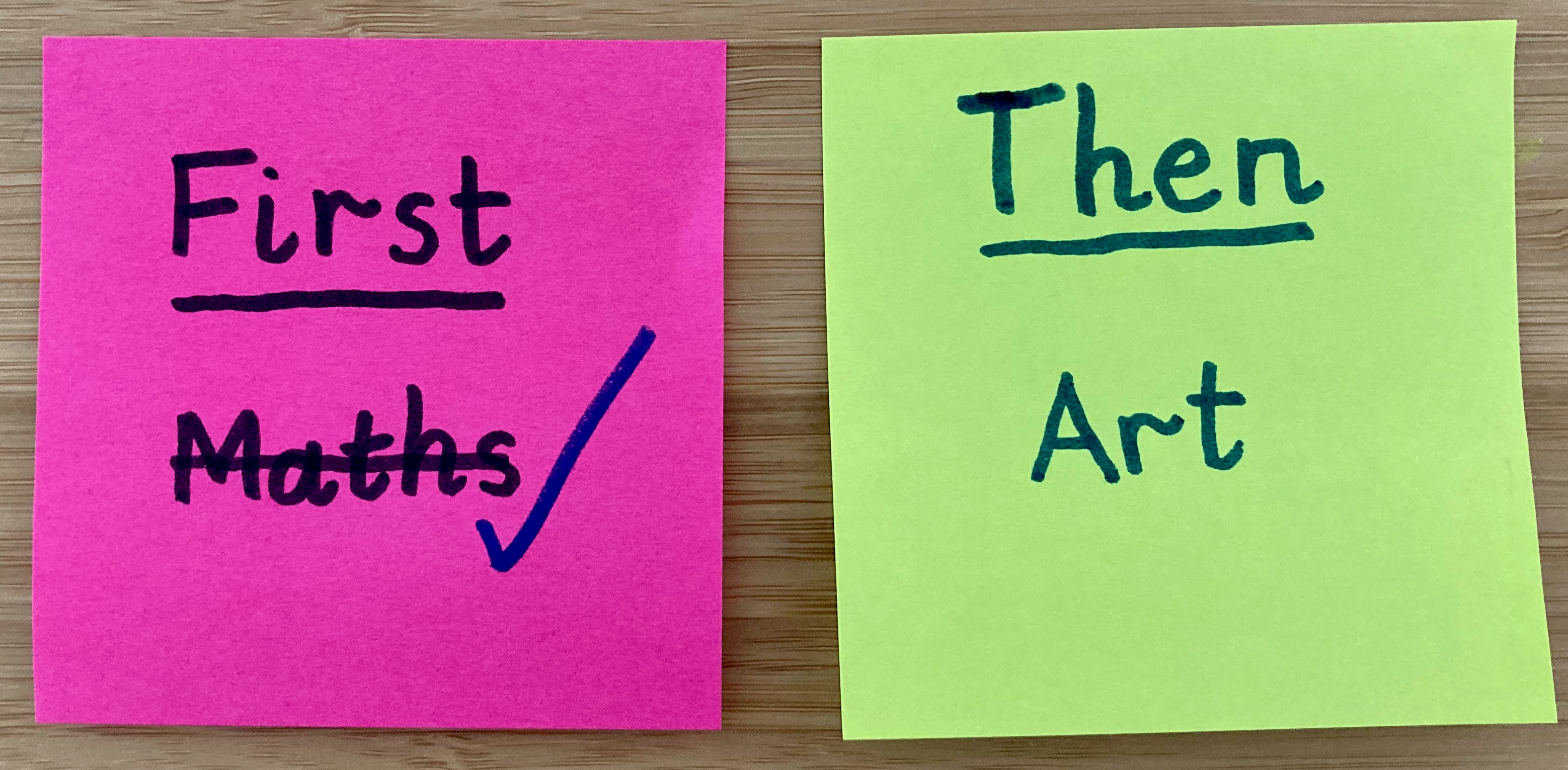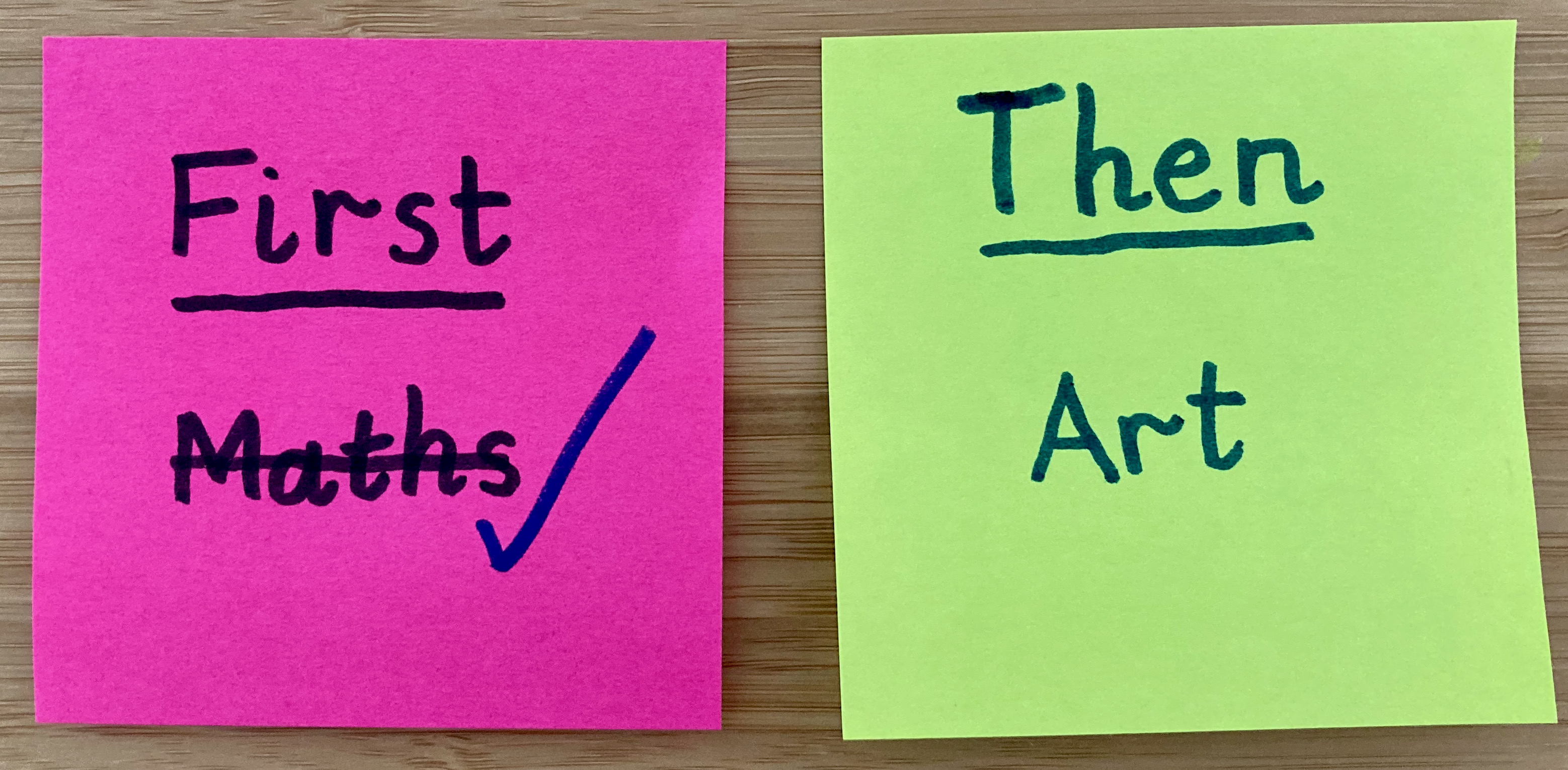First-Then visual support
Visual prompts, e.g. First-Then boards, support communication, language development and the processing of information. They also encourage the development of independence, confidence and self-esteem.
What is a First-Then board?
A First-Then board is a visual prompt consisting of two images (real objects, photographs, pictures and/or words) sequenced left to right. The visuals represent the order in which two activities/tasks will be completed. The 'first' visual usually represents a less preferred activity, the 'then' visual a preferred activity.
Why use a First-Then board?
A First-Then board helps your child to;
-
transition between activities and reduces anxiety
-
understand what is going to happen at a given time
-
follow directions and develop new skills
-
develop language comprehension skills
-
understand what they are expected to do
-
engage with less preferred activities
How to make a First-Then board:
- Collect together visuals to represent the activities/tasks you want to put on the board. These can be real objects, photographs, pictures, pictures and words, or just words.
(Top tip: Choose image types that are matched to your child's developmental stage.)
- Think about how you will make the First-Then board. Your child will need to be able to manipulate the visual images in some way to show when they have completed activities/tasks.
Here are a few ideas:
- A laminated board/card. Velcro or blu-tac are used to attach visual images to the board/card. When an activity/task is completed, the visual representing it is removed and put into a box or envelope marked 'all done' or 'finished'.

- Use a whiteboard. Activities/tasks can be rubbed out with a whiteboard eraser, cloth or kitchen towel, as they are completed.

- Use visual images drawn on sticky notes. Sticky notes can be removed as activities/tasks are completed, or the images crossed out.

-
Make the First-Then board. The visuals for 'first' and 'then' need to be displayed left to right. This helps develop understanding that activities happen in a sequential manner.
-
Show your child the First-Then board and give a brief verbal instruction, e.g. First craft then lego.
-
When the first activity/task has been completed, encourage your child to refer back to the First-Then board to see what they have done and what they need to do next. Use a verbal prompt if needed, e.g. all done craft, now lego and encourage them to remove the visual representing the completed activity.
Top tips:
-
First-Then boards can be used to break down an activity/task into smaller steps.
-
Make the First-Then Board portable. Allowing your child to take the board with them as they move between activities/tasks may help them to sustain attention during the transition.
Other posts you may like: Visual activity schedules
Go to the Resources page for free visual resoures.
